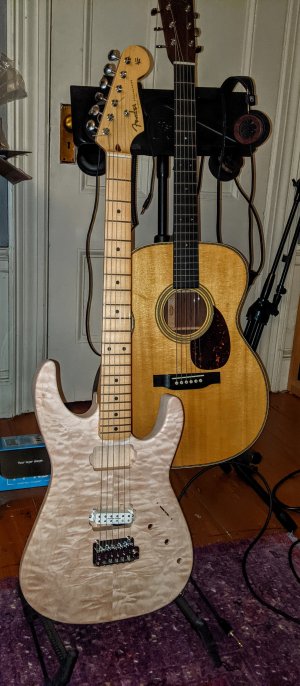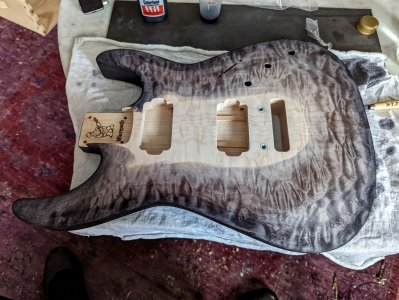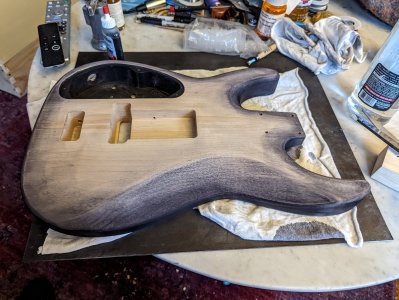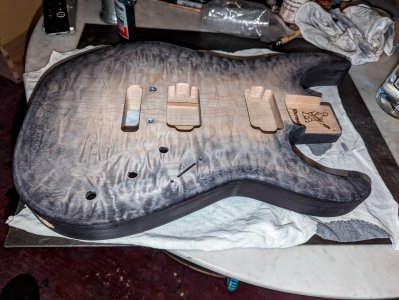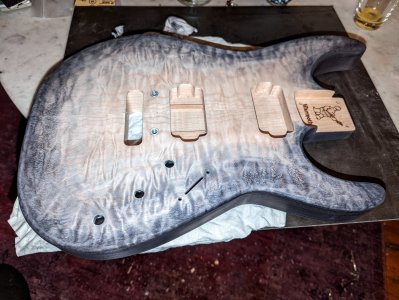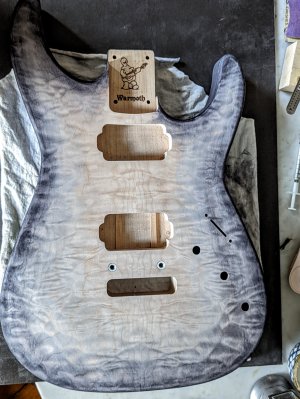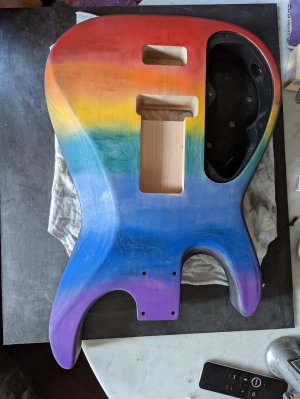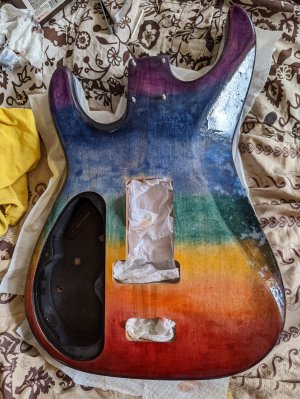Sadie-f
Senior Member
- Messages
- 427
Here's the plan for this guitar:
I'm settling in on a headboard design, a couple of my ideas will be challenging, that's ok. The pickups I want are neodymium Q-Tuner HBs. Those are not available until 2022, I'm not at all sure how long the construction will take, however I'm game to put in something temporary if I finish ahead of the pickups shipping.
Wiring will be a freeway 3b3-01, completely straight forward to what I wanted, the down position selecting B, N&B, N and up side selecting same positions split to the outer coils. There's an alternate setup where the up side selects HH out of phase parallel, out of phase series and in phase series, I'll trial that in building and maybe prefer it to the split option, tbd .
.
The bridge is a Gotoh 510, I kinda wish I'd gone with that on the first build, rather that the Fender American Std. Tuning machines will probably be graphtec ratios, open gear style.
I may wait until I can hear the axe fully assembled to decide on whether to install piezos in the bridge. I use these a lot in my rosewood>mahogany build, often to roll in more bass response along side the bridge HB, it's been the most satisfying combination in that guitar.
Meantime, it occurred to me I could easy enough borrow a neck and mini HB p/u from.my Fender strat and do a quick assembly to give her a spin before I dig in to finishing and assembly.
She sure sounds good at first blush! If my rosewood > mahogany W-strat has warm ringing tones, this shows off a brightness that's overwhelming! Before I start building, I'll move the pickup to the neck position and see how that feels.
I also expect the Warmoth neck to show a difference, the strat neck I bent on is super chunky, so about 50% stiffer than the 59 profile I'm using for the soloist. That means the one I'm using should resonate more, probably add some harmonics.
I'm really glad I took this detour on the way to the build proper. Here's the body bare, with temporary neck and a cheap set of strings bent on. Side benefit, I have the action and intonation dialed in, as well as a good setting for the trem springs.
I'm settling in on a headboard design, a couple of my ideas will be challenging, that's ok. The pickups I want are neodymium Q-Tuner HBs. Those are not available until 2022, I'm not at all sure how long the construction will take, however I'm game to put in something temporary if I finish ahead of the pickups shipping.
Wiring will be a freeway 3b3-01, completely straight forward to what I wanted, the down position selecting B, N&B, N and up side selecting same positions split to the outer coils. There's an alternate setup where the up side selects HH out of phase parallel, out of phase series and in phase series, I'll trial that in building and maybe prefer it to the split option, tbd
The bridge is a Gotoh 510, I kinda wish I'd gone with that on the first build, rather that the Fender American Std. Tuning machines will probably be graphtec ratios, open gear style.
I may wait until I can hear the axe fully assembled to decide on whether to install piezos in the bridge. I use these a lot in my rosewood>mahogany build, often to roll in more bass response along side the bridge HB, it's been the most satisfying combination in that guitar.
Meantime, it occurred to me I could easy enough borrow a neck and mini HB p/u from.my Fender strat and do a quick assembly to give her a spin before I dig in to finishing and assembly.
She sure sounds good at first blush! If my rosewood > mahogany W-strat has warm ringing tones, this shows off a brightness that's overwhelming! Before I start building, I'll move the pickup to the neck position and see how that feels.
I also expect the Warmoth neck to show a difference, the strat neck I bent on is super chunky, so about 50% stiffer than the 59 profile I'm using for the soloist. That means the one I'm using should resonate more, probably add some harmonics.
I'm really glad I took this detour on the way to the build proper. Here's the body bare, with temporary neck and a cheap set of strings bent on. Side benefit, I have the action and intonation dialed in, as well as a good setting for the trem springs.



